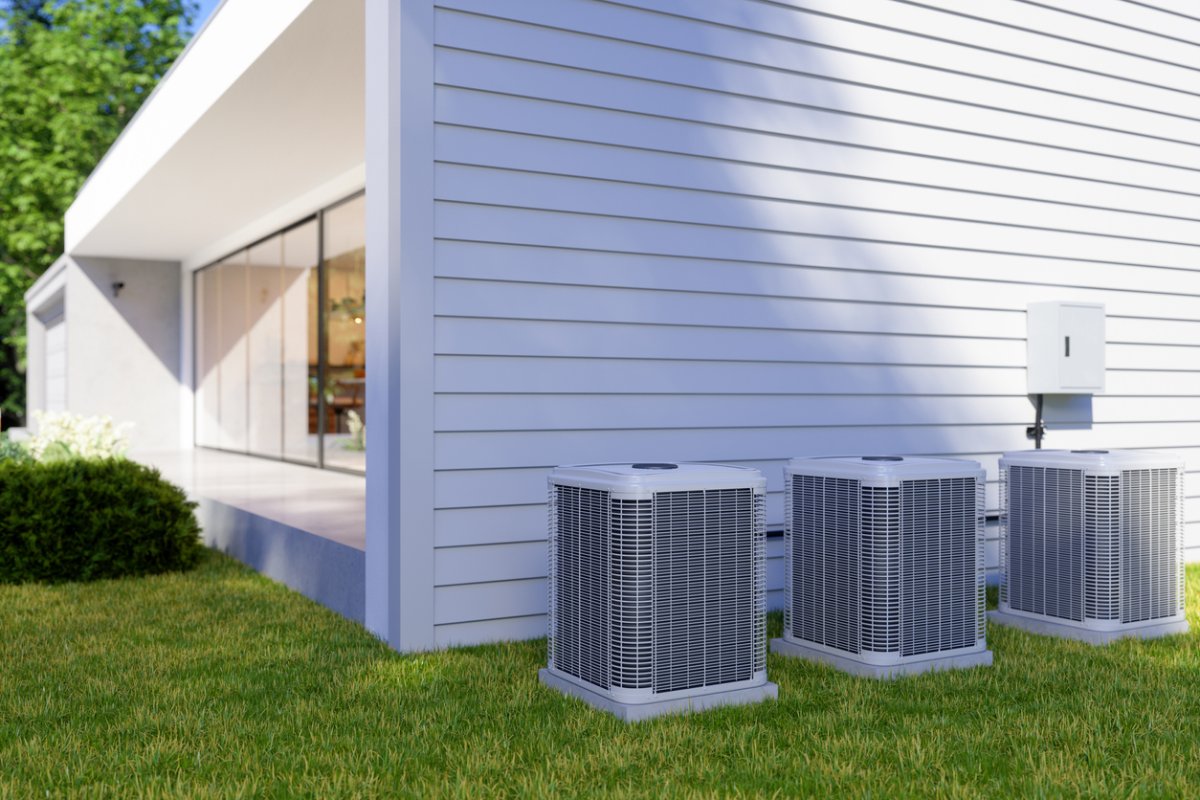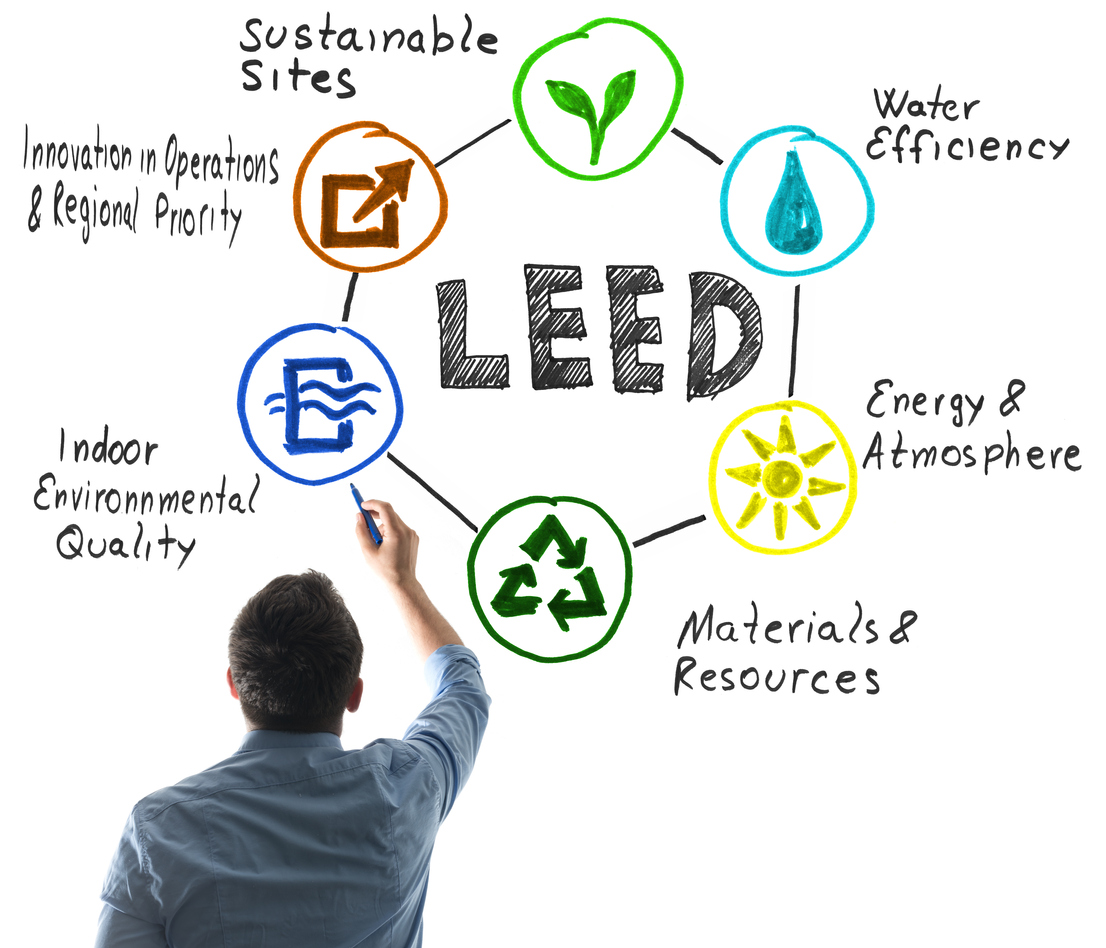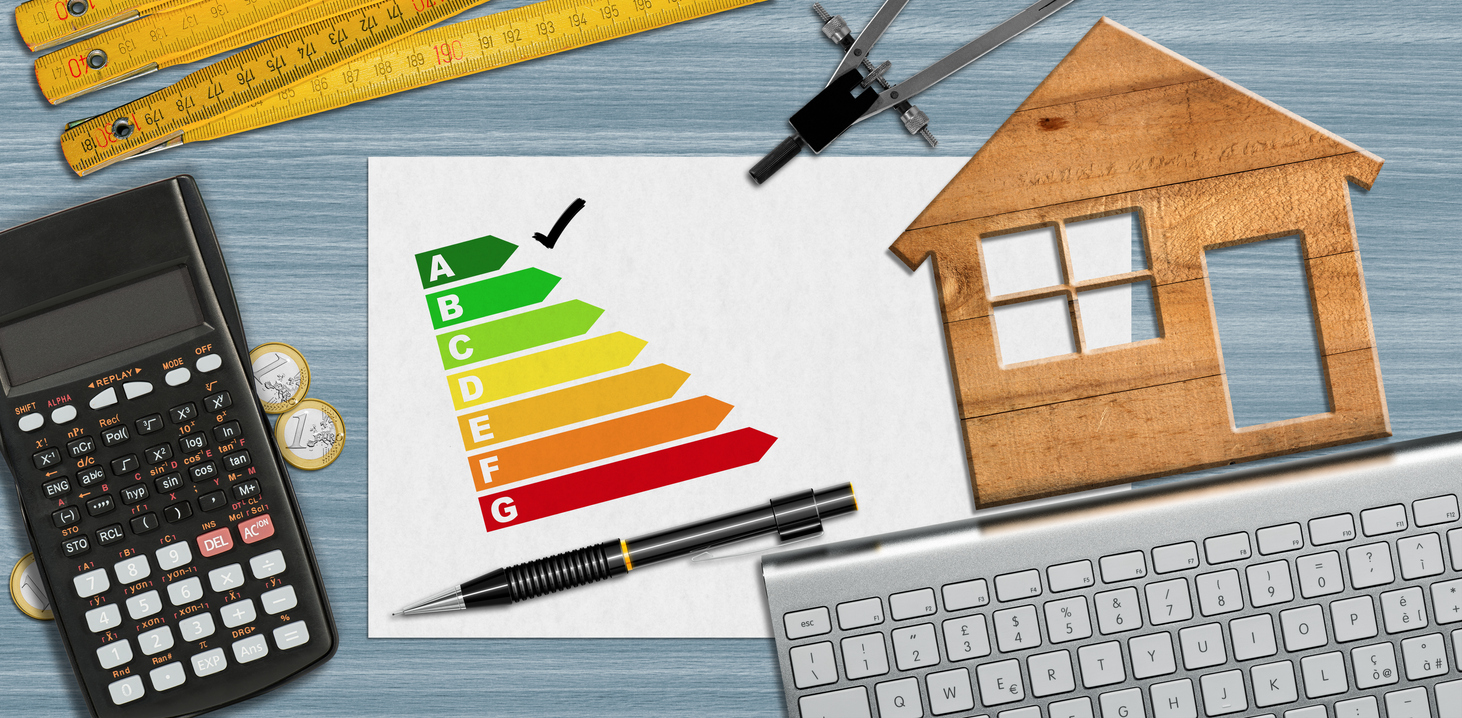

We may earn revenue from the products available on this page and participate in affiliate programs. Learn More ›
Do you know how the SEER rating on your new air conditioner impacts your energy bill? How about HSPF of your heat pump? Does your home meet NGBS standards?
The acronyms used to rate the energy efficiency of a home and everything in it can be confusing. However, decoding them and understanding what they mean is the key to reducing your home’s carbon footprint, improving its indoor air quality, and unlocking energy savings in your current or future home. Ahead, learn what some of the most important ratings mean, so you can take advantage of the savings they offer.
1. Energy Star

One of the most common phrases and rating systems used to describe the energy efficiency of appliances and building products is Energy Star. Its ratings help shoppers compare the energy efficiency of washers, refrigerators, air conditioners, light bulbs, windows, doors, heat pumps, and other electronics and appliances.
Products that have Energy Star ratings have met the high standards for energy efficiency set by the Environmental Protection Agency. While they often cost more, Energy Star appliances and building products usually provide utility bill savings.
RELATED: It Pays to Make These 5 Energy-Efficient Home Upgrades
2. National Green Building Standard

If you want a comprehensive review that rates your home’s energy efficiency from basement to roof, then the National Green Building Standard (NGBS) is a useful tool. The NGBS has a set of standards for architects, builders, and developers for constructing homes that are energy efficient and environmentally sustainable.
Standards cover water and energy efficiency, indoor air quality, the use of sustainable building materials and practices, tree preservation, and low maintenance landscaping. Search for NGBS certified homes throughout the country on the association’s website.
RELATED: The Best Energy-Efficient Air Conditioners
3. SEER 2

Seasonal Energy Efficiency Ratio 2 (SEER2) is used to rate the energy efficiency of some of the biggest energy users in any home–the air conditioner, gas furnace, and heat pump. SEER2 ratings, which replaced the original SEER ratings in January of this year, run from 14 to 21.
The higher the SEER2 rating, the more efficient the heat pump or air conditioner. How much more efficient? While you’ll pay more for air conditioners and heat pumps with a higher SEER rating, you can expect to save about 7 percent on your electric bill for each unit of SEER.
RELATED: 12 Ways to Make an Old Home More Energy Efficient
4. LEED

LEED is a certification earned for buildings that are energy efficient, have a low carbon footprint, and promote healthy indoor air quality. The U.S. Green Building Council (USGBC) awards points based on a review process and gives out four levels of certifications, with Platinum as its highest level.
LEED covers all types of buildings, including residential. Ratings for homes are determined by reviewing all of the major systems of a home, from indoor air quality to energy and water efficiency to the use of sustainable building materials.
5. EER

Similar to SEER, Energy Efficiency Ratings are used to rate air conditioners and heat pumps. Whereas SEER rates the overall performance of heating and cooling systems, EER is used to rate the unit’s cooling efficiency at the peak cooling temperature of 95 degrees Fahrenheit.
Many manufacturers list their EER, but you can also calculate it yourself by dividing the air conditioner’s cooling output, which is given in BTUs, by its wattage. The most energy efficient window and ductless air conditioning units have an EER of 12 or above.
RELATED: 12 Ways to Put Your Home on an Energy Diet
6. HSPF

HSPF, which stands for Heating Seasonal Performance Factor, is to air-source heat pumps what SEER ratings are to air conditioners. An HSPF rating determines a heat pump’s heating efficiency.
To calculate HSPF, divide the overall heat output by the amount of electricity it uses. HSPF ratings range from 8.2 to 13 with anything above 8.2 considered efficient enough to earn an Energy Star rating. Today’s most energy efficient heat pumps have an HSPF rating of around 10.
7. AFUE

Just as heat pumps and air conditioners have efficiency ratings, so do furnaces. A furnace’s Annual Fuel Utilization Efficiency (AFUE) rating tells you the percentage of the fuel it’s burning that’s actually converted into heat and what percentage is lost to exhaust.
A furnace with an AFUE of 88 converts 88 percent of the fuel it burns into heat while 12 percent is lost to exhaust. High efficiency furnaces have an efficiency rating of 90 percent or greater.
RELATED: 9 Energy-Saving Home Upgrades That Pay for Themselves
8. Enterprise Green Communities Certification

An Enterprise Green Communities Certification is given to affordable housing communities that follow strict guidelines covering energy efficiency, environmental responsibility, and indoor air quality.
These communities are made up of energy-efficient homes with building materials that are devoid of harmful chemicals. They also feature outdoor play areas, community gardens, and landscaping that use plants native to the area.
RELATED: 10 Energy-Saving Myths You Shouldn’t Believe
9. HERS

If you’re buying or selling a home, you may have run into a term known as the HERS Index or HERS Score. HERS, which stands for Home Energy Rating System, is used by the Department of Energy to measure a home’s overall energy efficiency compared to other homes. The lower the score, the more efficient the home. The average resale home has a rating of 130 on the scale while a new home has an average rating of around 100.
